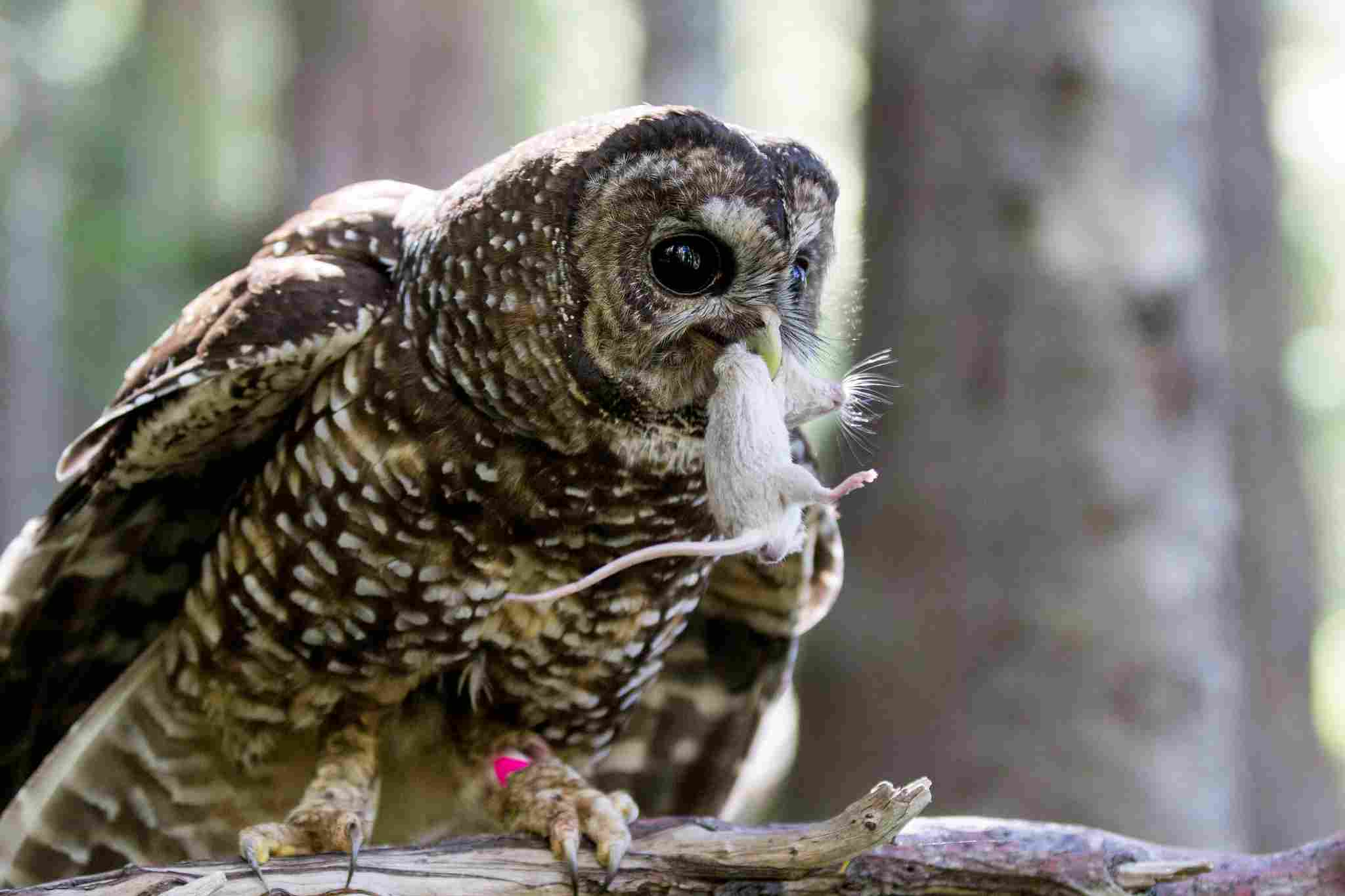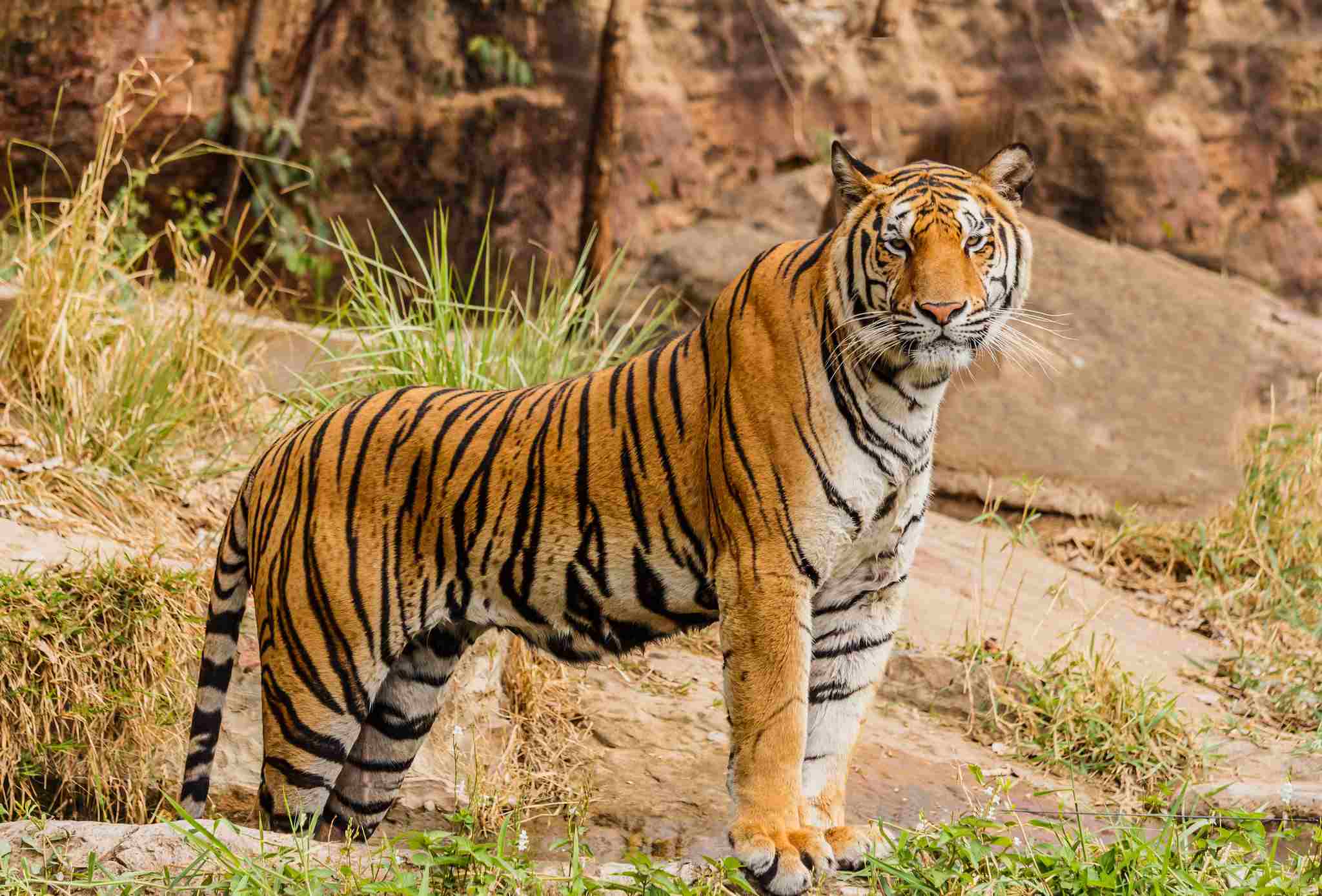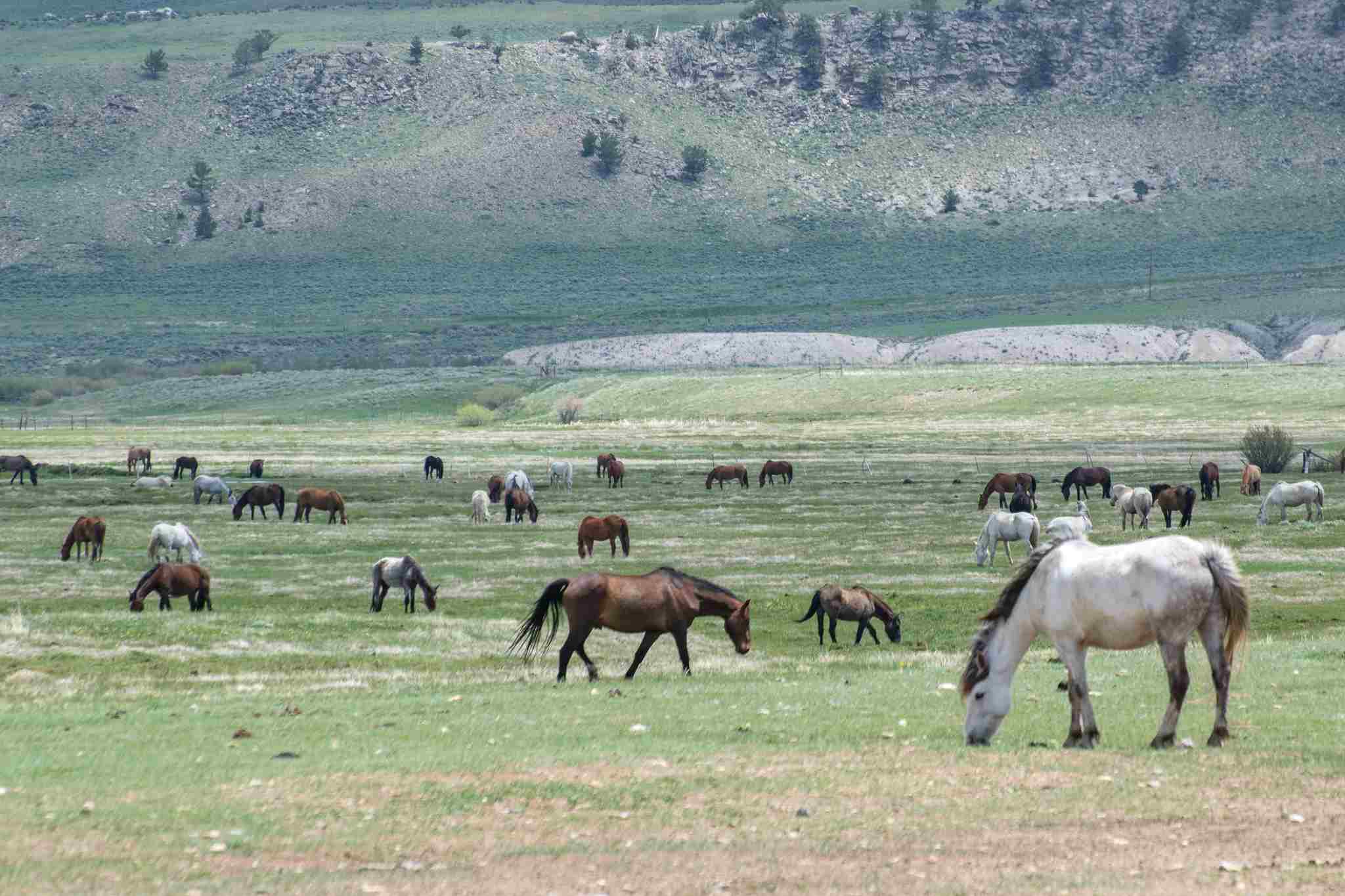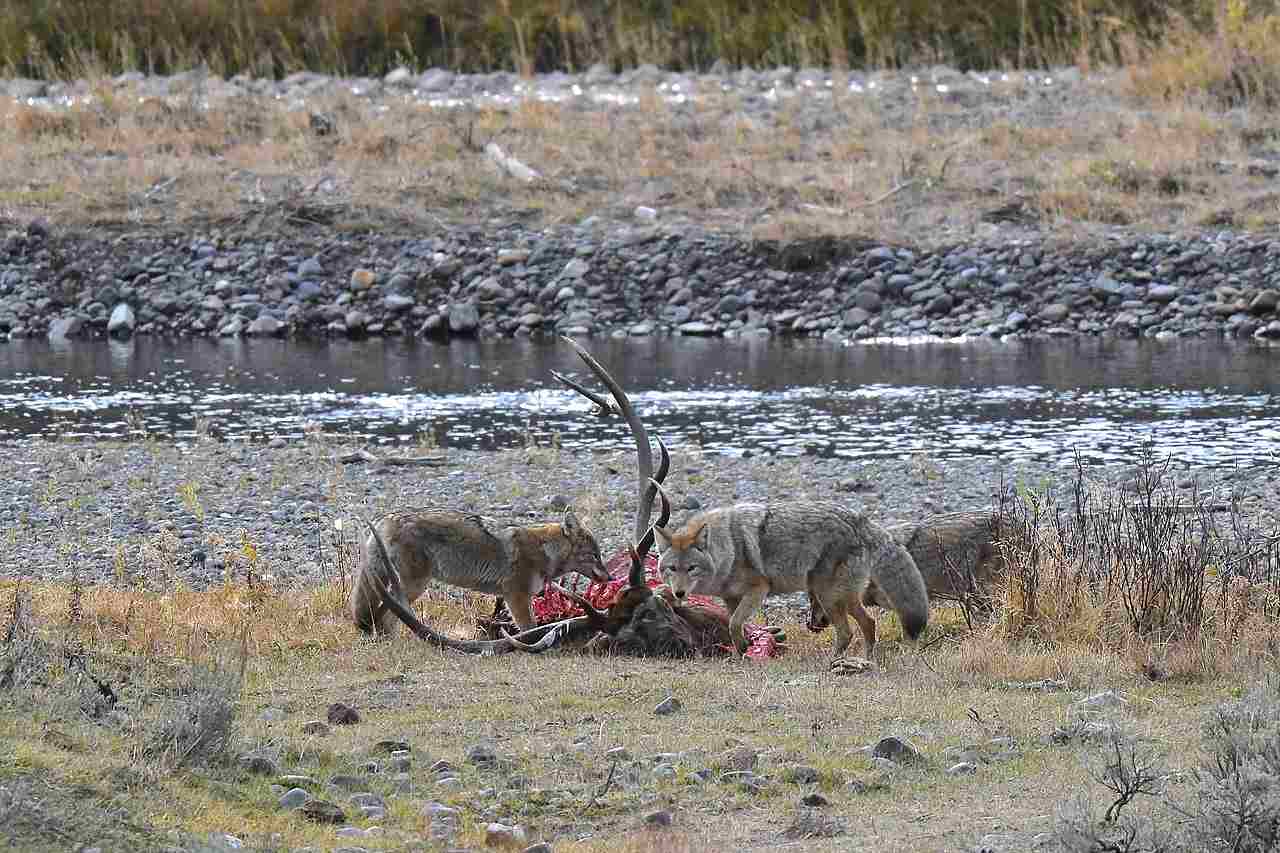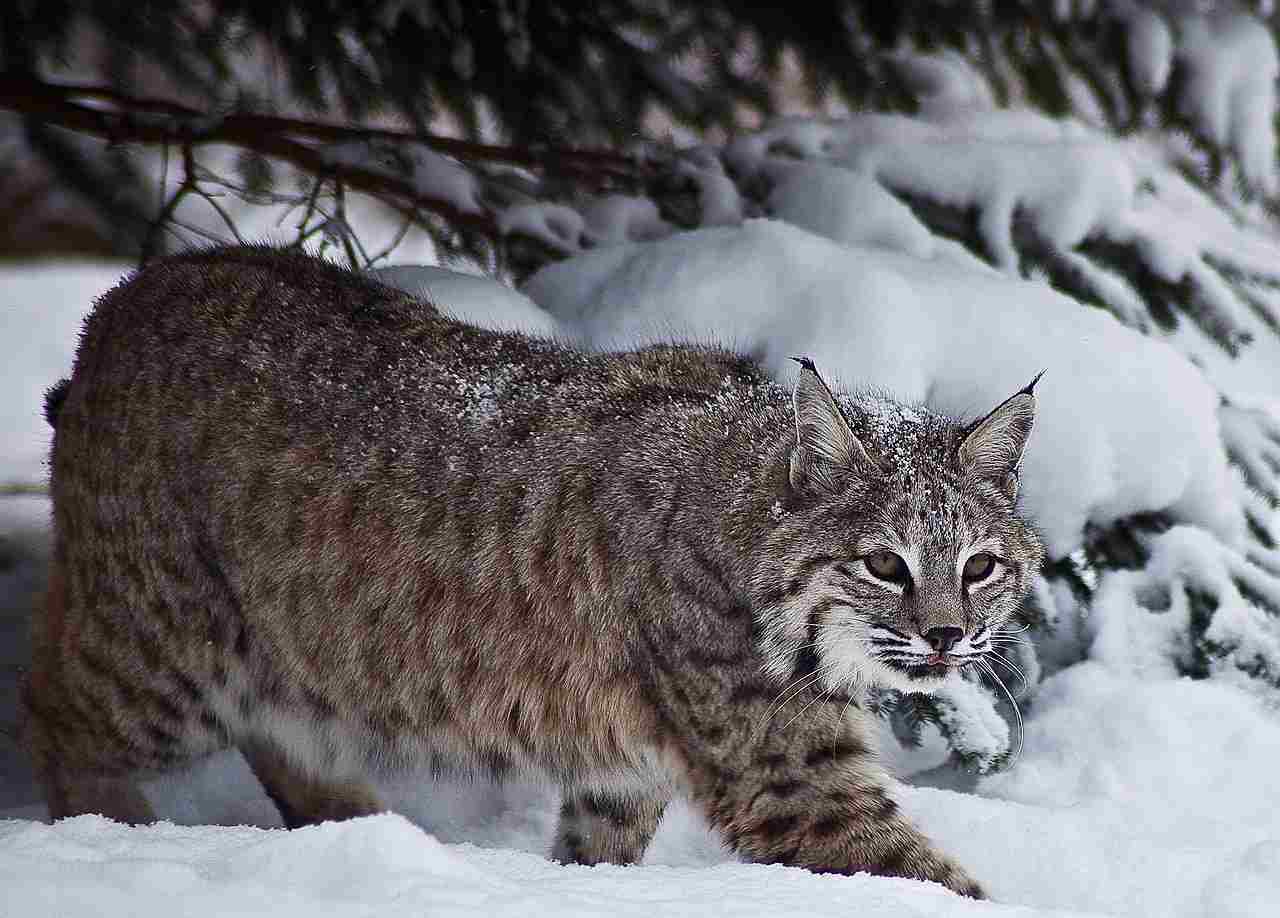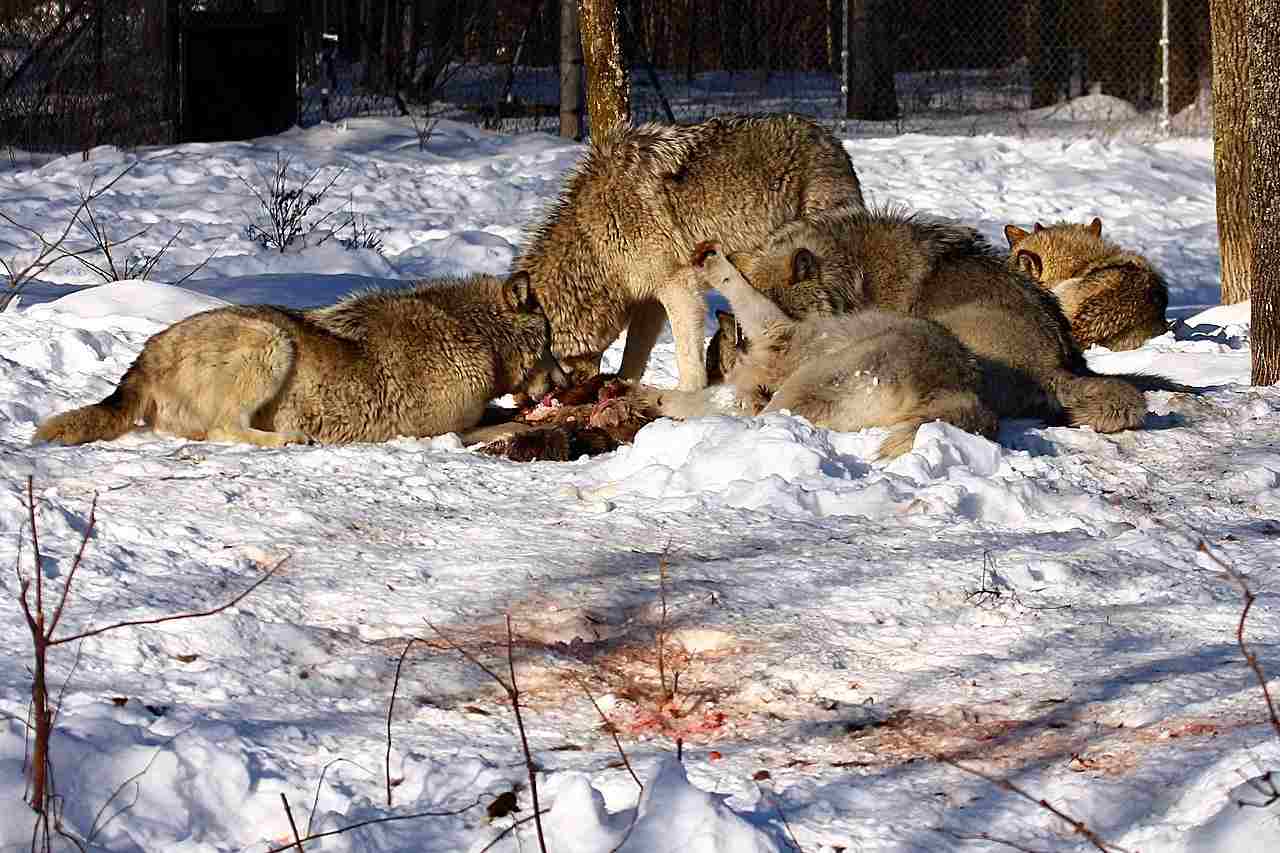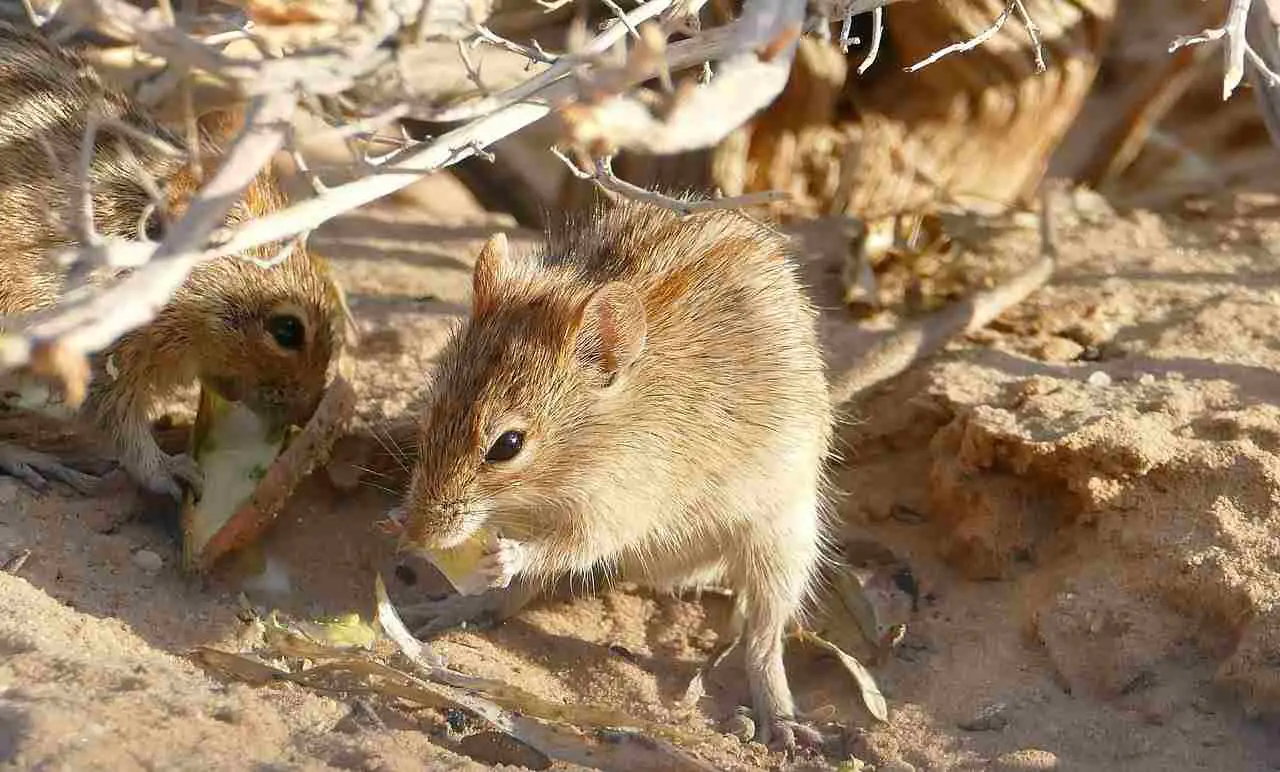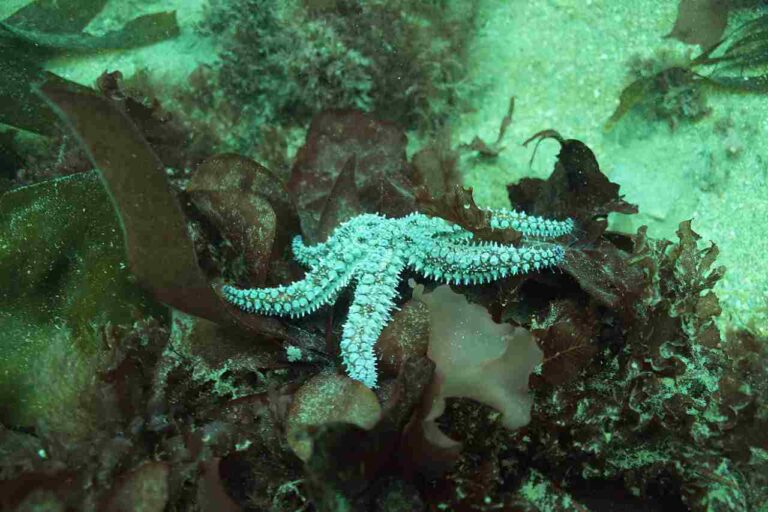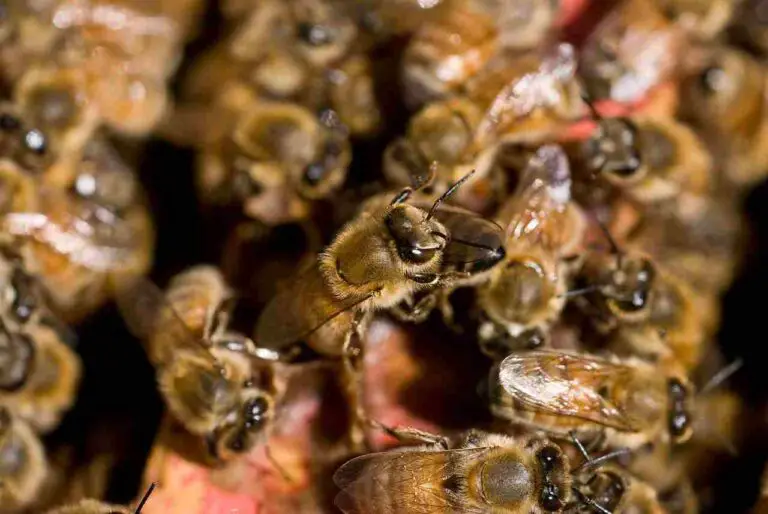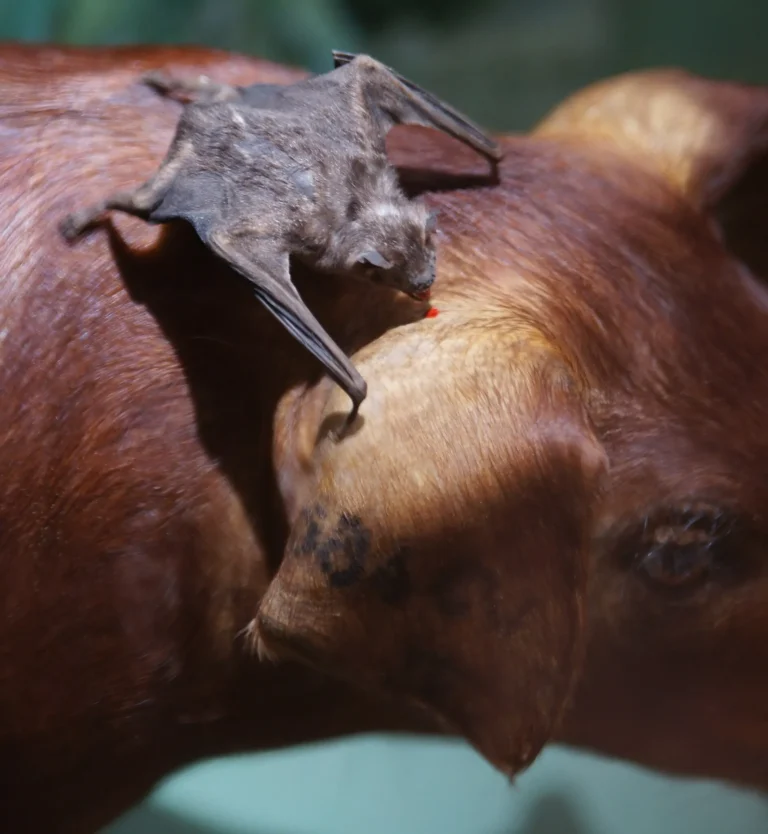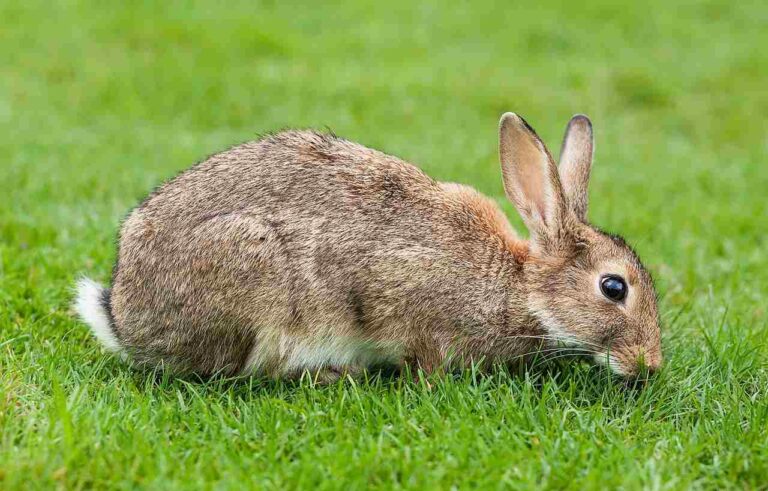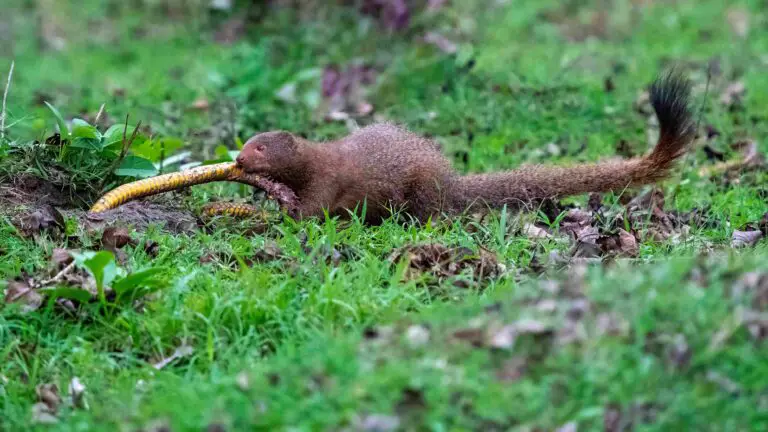Do Hawks Eat Foxes? Analyzing Relations Between Foxes and Raptors
Hawks are indeed raptors and have the ability to prey on foxes. However, it is important to note that hawks typically prefer to hunt smaller animals such as rodents, due to the relatively small size of foxes compared to other mammals, especially predators. While hawks may occasionally target foxes, their primary diet consists of smaller prey.
This preference for smaller animals is likely due to factors such as ease of capture and energy efficiency. By focusing on smaller prey, hawks can maximize their hunting success while minimizing the risk of injury. Therefore, while hawks have the capability to prey on foxes, it is not their primary or preferred food source.
Scenarios Where Hawks Eat Foxes
1). Sick Adults
Sick adult foxes are particularly vulnerable to predation by hawks. When foxes are weakened due to illness or disease, they become easy targets for raptors. Hawks, with their keen eyesight and powerful talons, can easily spot and capture sick adult foxes. This is especially true in areas where the fox population is low and the landscape is relatively deserted, such as prairies or other arid and semi-arid zones.
In these environments, hawks can take advantage of the weakened state of sick adult foxes. They can swoop down from the sky and quickly seize their prey, using their sharp talons to immobilize the fox. Once captured, the hawk will often consume the sick adult fox on the spot, feeding on its flesh and organs.
Sick adult foxes are more susceptible to predation because their weakened state hinders their ability to escape or defend themselves effectively. Their reduced mobility and compromised health make them easy targets for hawks, which are skilled hunters and opportunistic feeders.
It is important to note that hawks primarily target sick adult foxes when they are in a weakened state. Healthy adult foxes are generally more agile and alert, making it more difficult for hawks to successfully capture them. However, sick adult foxes are more vulnerable and provide an easier meal for hawks.
Therefore, sick adult foxes are at a higher risk of predation by hawks. When weakened by illness or disease, they become easy targets for raptors due to their reduced mobility and compromised health. Hawks take advantage of these vulnerable individuals, using their sharp talons to capture and consume them.
2). Injured Adults With Low Mobility
Injured adult foxes with low mobility are also vulnerable to predation by hawks. When foxes are injured and unable to move quickly or effectively defend themselves, they become easy targets for raptors. Hawks, with their sharp eyesight and powerful talons, can take advantage of these situations, particularly in areas that are relatively deserted, such as prairies or other arid and semi-arid zones.
In these environments, hawks have the opportunity to land and feed on injured adult foxes with low mobility. They can swoop down from the sky and quickly seize their prey, using their sharp talons to immobilize the fox. Once captured, the hawk will often consume the injured adult fox on the spot, feeding on its flesh and organs.
Injured adult foxes with low mobility are more susceptible to predation because their injuries hinder their ability to escape or defend themselves effectively. Their limited mobility and compromised physical condition make them easy targets for hawks, which are skilled hunters and opportunistic feeders.
It is important to note that hawks primarily target injured adult foxes with low mobility when they are unable to move or defend themselves effectively. Healthy adult foxes, even if injured, may still have the ability to evade or fight off a hawk’s attack. However, injured adult foxes with low mobility are more vulnerable and provide an easier meal for hawks.
Therefore, injured adult foxes with low mobility are at a higher risk of predation by hawks. When they are unable to move or defend themselves effectively due to their injuries, hawks take advantage of these vulnerable individuals, using their sharp talons to capture and consume them. In areas like prairies or other arid and semi-arid zones, where the landscape is relatively deserted, hawks have a greater opportunity to prey on injured adult foxes.
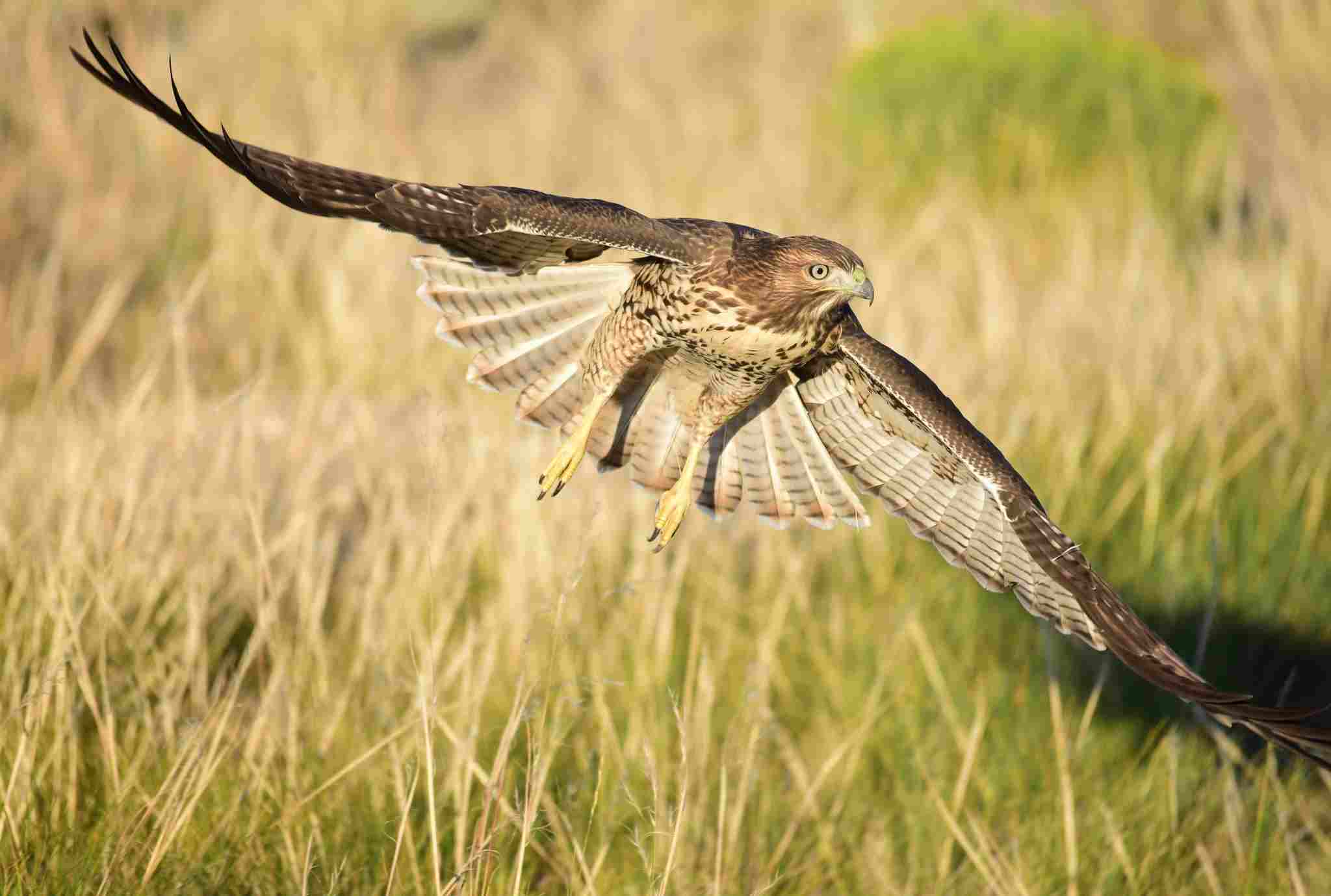
3). Unprotected Young
Unprotected young foxes are particularly vulnerable to predation by hawks. These young foxes are small and weaker than adults, making them easy targets for raptors. Unlike adult foxes, young foxes have not yet developed the skills and physical abilities to effectively defend themselves against predators.
One scenario where hawks prey on unprotected young foxes is when they are captured directly from their dens. Hawks have the ability to spot these dens from the sky and swoop down to snatch the defenseless young foxes. With their sharp talons, hawks can quickly immobilize the young foxes and carry them away for consumption.
Another scenario where unprotected young foxes are at risk is when they stray away from their dens. These young foxes may wander too far from the safety of their den, making them easy targets for hawks. Hawks, with their keen eyesight, can spot these vulnerable young foxes and seize the opportunity to capture them.
It is important to note that hawks primarily target unprotected young foxes because of their size and vulnerability. These young foxes are not yet equipped with the skills and physical strength to escape or defend themselves effectively. Hawks take advantage of this weakness and prey on the defenseless young foxes.
4). Scavenging On Roadkills, Leftovers, Remains
Scavenging on roadkills, leftovers, and remains is one of the most common scenarios where hawks and other raptors feed on foxes. Fox carcasses that have been killed by other causes, such as moving vehicles or other predators, can become a valuable food source for these birds of prey. Additionally, foxes that have died of illness can also provide a carcass that hawks can scavenge on.
When a fox is killed on the road or by another predator, it leaves behind a carcass that can attract scavengers like hawks. These birds have keen eyesight and can spot the carcass from a distance, allowing them to quickly locate and feed on the remains. Hawks are known for their ability to swoop down and snatch up food with their sharp talons, making them efficient scavengers.
Leftover remains from a fox kill can also be a source of food for hawks. After a predator has made a kill and consumed what it needs, there may be leftover parts of the carcass that are still edible. Hawks can take advantage of these leftovers and scavenge on the remains, ensuring that no part of the fox goes to waste.
In addition to roadkills and leftovers, foxes that have died of illness can also provide a food source for hawks. When a sick fox succumbs to its illness, its carcass becomes available for scavengers. Hawks can detect the scent of a decaying carcass and locate it for feeding purposes.
Generally, scavenging on roadkills, leftovers, and remains is a common behavior observed in hawks and other raptors. These birds take advantage of the available food sources provided by fox carcasses that have been killed by other predators, vehicles, or have died of illness.
Do Eagles Eat Foxes?
Eagles are the most common raptor that preys on foxes. Their superior sensitivity, hunting prowess, flight, and other adaptations make them highly efficient predators. Eagles are known to hunt in areas inhabited by foxes, including forests, mountains, prairies, and deserts.
Eagles have exceptional eyesight, allowing them to spot their prey from great distances. Their keen vision enables them to locate foxes and target them as potential food sources. With their powerful wings and sharp talons, eagles are capable of swooping down on their prey with great speed and precision.
In forested areas, eagles can take advantage of the dense vegetation and use it as cover to ambush unsuspecting foxes. They can perch on high branches, patiently waiting for the perfect opportunity to strike. Once they spot a fox, they swiftly descend and capture it with their strong talons.
Mountains provide eagles with an advantageous vantage point to spot foxes from above. They can soar high in the sky, scanning the terrain for any signs of movement. When they locate a fox, they can dive down at incredible speeds, using their momentum to catch their prey off guard.
In prairies and open grasslands, eagles can utilize their exceptional flight abilities to their advantage. They can soar above the vast expanse, scanning the ground for any signs of fox activity. Once they spot a potential target, they can swiftly descend and snatch it up with their powerful talons.
Even in deserts, where resources may be scarce, eagles can still find opportunities to prey on foxes. They can use their keen eyesight to locate foxes that may be seeking shelter or foraging for food in the arid landscape. With their agility and speed, eagles can quickly close in on their prey and capture it.
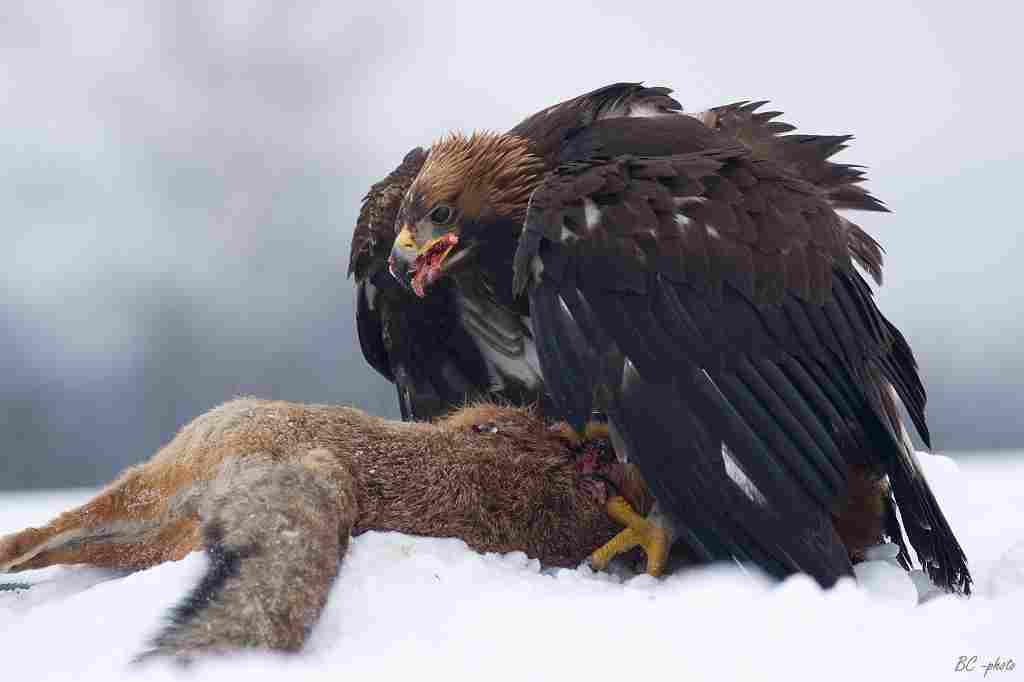
Scenarios Where Eagles Eat Foxes
1). Ambush and In Situ Consumption
In the realm of raptor and fox interactions, one scenario that stands out can be described as ambush and in situ consumption. This strategy is employed by eagles to target and consume foxes in specific circumstances. Eagles, with their powerful talons, can execute an ambush on healthy adult foxes as well as juveniles. With their swift and precise attack, they can instantly kill their prey.
Once the fox is immobilized, the eagle proceeds to feed on its flesh in situ. This means that the consumption takes place right at the location of the ambush. Eagles prefer deserted areas such as mountains, deserts, and prairies for this purpose. These areas provide the necessary seclusion and uninterrupted feeding opportunities for the eagle.
This scenario is relatively common, especially when it comes to adult foxes. It occurs most frequently in mountainous regions. The weight of the fox is not a hindrance for the eagle, as it can successfully ambush, kill, and lift the fox for a short distance. The eagle then transports the fox to its nest or another safe and deserted area where it can feed without disturbance.
Under these specific conditions, eagles can successfully prey on foxes. This strategy showcases the adaptability and hunting prowess of these magnificent birds. By employing their natural instincts and utilizing their physical capabilities, eagles can secure a meal from the fox population.
2). Ambush and Short-Distance Transport
Another scenario in which eagles target and consume foxes is through the strategy of ambush and short-distance transport This method is relatively common, especially when it comes to adult foxes, and it occurs most frequently in mountainous areas.
In this scenario, the eagle takes advantage of its strength and agility to execute a swift ambush on the unsuspecting fox. With its powerful talons, the eagle can immobilize and kill the fox in a matter of seconds. Despite the weight of the fox, the eagle is capable of lifting it for a short distance.
Once the fox is captured, the eagle transports it to its nest or another safe and deserted area where it can feed without disturbance. This short-distance transport allows the eagle to secure its meal and avoid potential competition from other predators. The eagle’s nest provides a secure location for feeding, as it is often located in high and inaccessible areas.
The ambush and short-distance transport phenomenon is particularly effective in open areas such as plains, semiarid zones, and grasslands. These areas provide the necessary visibility and space for the eagle to execute its ambush and transport the fox to a safe location.
Under these specific conditions, eagles can successfully prey on foxes. Their ability to ambush, kill, and lift the fox for a short distance showcases their hunting prowess and adaptability. This strategy allows eagles to secure a meal from the fox population, ensuring their survival in their natural habitat.
3). Sick or Injured Adults
Sick or injured adult foxes are particularly vulnerable to predation by eagles, especially in open areas such as plains, semiarid zones, and grasslands. When foxes are weakened and unable to move quickly or defend themselves, eagles can easily capture them.
In these scenarios, eagles take advantage of the fox’s weakness and immobility. They use their superior strength and agility to swoop down and capture the sick or injured fox. With their powerful talons, eagles can quickly immobilize and kill the fox, ensuring a successful hunt.
The open areas provide the perfect hunting ground for eagles, as they offer clear visibility and ample space for the birds to execute their hunting strategies. Sick or injured foxes are more likely to be found in these areas, making them easy targets for the opportunistic eagles.
Once the eagle has captured the sick or injured fox, it will typically transport it to a safe location where it can feed without disturbance. This could be the eagle’s nest or another secluded area away from potential competition. By securing their meal in a safe location, eagles ensure they can feed without interruption and maximize their chances of survival.
The ability of eagles to prey on sick or injured adult foxes demonstrates their adaptability and hunting prowess. They are able to exploit the vulnerabilities of their prey and take advantage of the open landscapes to secure a meal. This hunting strategy allows eagles to thrive in their natural habitat and maintain a balanced ecosystem.
4). Exposed Juveniles
Exposed juveniles are the most vulnerable group of foxes due to their small size, weakness, and early stage of development. At this stage, they are unable to defend themselves effectively, making them easy targets for predators like eagles.
Eagles can prey on these unprotected juveniles, taking advantage of their vulnerability. With their superior strength and agility, eagles can swoop down and capture the young foxes without much resistance. Their powerful talons allow them to quickly immobilize and kill the juveniles, ensuring a successful hunt.
The open areas, such as plains, semiarid zones, and grasslands, provide the perfect hunting ground for eagles to target exposed juveniles. These areas offer clear visibility and ample space for the birds to execute their hunting strategies. Juvenile foxes are more likely to be found in these open landscapes, making them easy prey for opportunistic eagles.
Once an eagle has captured an exposed juvenile fox, it may transport it to a safe location where it can feed without disturbance. This could be the eagle’s nest or another secluded area away from potential competition. By securing their meal in a safe location, eagles ensure they can feed without interruption and maximize their chances of survival.
The ability of eagles to prey on exposed juvenile foxes highlights their adaptability and hunting prowess. They are able to exploit the vulnerabilities of these young foxes and take advantage of the open landscapes to secure a meal. This hunting strategy allows eagles to thrive in their natural habitat and maintain a balanced ecosystem.
5). Carrion Scavenging
Like hawks, eagles also prey on fox carcasses. These carcasses can come from various sources, such as roadkill or leftovers from other predators. Additionally, eagles may target foxes that have died from causes like illness, as these carcasses provide an easy meal for the birds of prey. Under these conditions, eagles can scavenge on foxes, taking advantage of the available food source.
Carrion scavenging is a common behavior observed in eagles. When they come across a fox carcass, eagles will swoop down and begin feeding on the remains. Their sharp beaks and powerful talons allow them to tear into the flesh and consume the meat. This scavenging behavior is an efficient way for eagles to obtain nutrients without the need for an active hunt.
Roadkill is a particularly common source of carrion for eagles. As foxes are often found near roads, they can become victims of vehicle collisions. When a fox is hit by a car, it becomes an easy target for scavenging eagles. These birds can quickly locate the carcass and take advantage of the opportunity for an easy meal.
In addition to roadkill, eagles may also scavenge on foxes that have been killed by other predators. When larger predators, such as wolves or bears, make a kill, they may not consume the entire carcass. This leaves behind leftover remains that eagles can scavenge on. By taking advantage of these leftovers, eagles can minimize their hunting efforts and still obtain a substantial meal.
Carrion scavenging plays an important role in the ecosystem. By consuming fox carcasses, eagles help to clean up the environment and prevent the spread of disease. They also benefit from the available food source, ensuring their own survival and contributing to the balance of the food chain.
What Eats a Fox in the Forest?
In the forest, there are several predators that can potentially eat a fox. These predators include eagles, owls, bears, wolves, and pythons. While a fox is not the preferred prey for any of these animals, they can consume a fox if their preferred prey is not available.
Among these predators, eagles are the most common predators of foxes in the forest. Eagles have a versatile predation technique and often use an ambush strategy to catch their prey. They can swoop down from above and surprise a fox, making it an easy target. Their sharp talons and powerful beaks allow them to capture and consume the fox.
Owls are also known to occasionally target foxes in the forest, although less frequently than eagles. Owls primarily target young foxes, as they are smaller and more vulnerable. With their silent flight and excellent night vision, owls can sneak up on a fox and catch it off guard.
Bears and wolves are larger predators that rarely prey on foxes, but it does happen, especially in areas where their territories overlap and there is competition for prey. In times of food scarcity, bears and wolves may resort to hunting and consuming foxes as an alternative food source.
Pythons, although not commonly found in forests, can also be a threat to foxes. These large constrictor snakes have the ability to squeeze and suffocate their prey before consuming it. If a fox comes across a python in the forest, it could potentially become a meal for the snake.
In addition to these predators, other reptiles like alligators may also eat foxes in the forest. However, it is important to note that predation on foxes in the forest depends on various factors such as the overall species richness of the ecosystem, the presence of alternative food sources, and the size and age of the foxes.
What Eats a Fox in the Food Chain?
In the food chain, foxes can be preyed upon by various animals, including higher tertiary consumers such as cougars, wolves, bears, and eagles. These predators occupy the top of the food chain and have the size and predatory capacity to hunt and consume foxes. Additionally, fellow secondary consumers with larger size or higher predatory capacity, such as hawks, bald eagles, bobcats, coyotes, and wild dogs, can also pose a threat to foxes.
The predation of foxes in the food chain depends on several factors. One important factor is the overall species richness of the ecosystem. In ecosystems with a high diversity of species, there may be a greater number of predators that can potentially prey on foxes. This increases the chances of foxes being hunted and consumed by other animals.
The presence of alternative food sources also plays a role in the predation of foxes. If the preferred prey of predators, such as deer or rabbits, is abundant, they may be less likely to target foxes as a food source. However, in situations where the preferred prey is scarce, predators may turn to foxes as an alternative food source.
The species, size, and age of foxes can also influence their vulnerability to predation in the food chain. Different predator species may have different preferences when it comes to hunting foxes. For example, larger predators like cougars and bears may target adult foxes, while smaller predators like hawks and bobcats may primarily target young or smaller-sized foxes.
Conclusion
* In the first section, we explored the scenarios where hawks eat foxes. We learned that sick adults, injured adults with low mobility, unprotected young, and scavenging on roadkills, leftovers, and remains are the main situations where hawks may prey on foxes. This highlights the opportunistic nature of hawks and their ability to adapt their diet based on available food sources.
* Moving on, we delved into the question of whether eagles eat foxes. We discovered that eagles can indeed prey on foxes in certain scenarios. These include ambush and in situ consumption, ambush and short-distance transport, sick or injured adults, exposed juveniles, and carrion scavenging. Eagles, with their impressive size and hunting skills, are capable of taking down foxes when the opportunity arises.
* We then explored what eats a fox in the forest. In this section, we learned that foxes can be preyed upon by various animals in their natural habitat. Higher tertiary consumers such as cougars, wolves, bears, and eagles pose a significant threat to foxes. Additionally, secondary consumers like hawks, bald eagles, bobcats, coyotes, and wild dogs can also hunt and consume foxes. The predation of foxes in the forest depends on factors such as species richness, availability of alternative food sources, and the size and age of the foxes.
* In the previous section, we discussed what eats a fox in the food chain. We discovered that foxes can be preyed upon by higher tertiary consumers like cougars, wolves, bears, and eagles. Additionally, secondary consumers with larger size or higher predatory capacity, such as hawks, bald eagles, bobcats, coyotes, and wild dogs, can also pose a threat to foxes. The vulnerability of foxes to predation in the food chain depends on factors such as species preferences, availability of alternative food sources, and the size and age of the foxes.
* Now that we have examined the various scenarios and factors surrounding the predation of foxes by hawks, eagles, and other animals, it is clear that foxes are not exempt from being hunted and consumed by these predators. While foxes may have their own hunting skills and strategies, they are not invulnerable in the face of larger and more powerful predators.
FAQs
1. What Does a Hawk Eat?
Hawks have a diverse diet that includes small mammals, other birds, fish, reptiles, and amphibians. They are skilled hunters and have adapted to various environments, allowing them to find food sources in different habitats.
In terms of small mammals, hawks commonly prey on rodents such as mice, voles, and squirrels. They have sharp talons and beaks that enable them to catch and kill their prey efficiently. Additionally, hawks are known to hunt and feed on other birds, including pigeons, doves, and smaller raptors.
When it comes to aquatic prey, hawks are capable of catching fish from bodies of water. They can spot their prey from high perches and dive down to snatch fish with their talons.
Hawks also have the ability to capture reptiles and amphibians, such as snakes, lizards, and frogs. Their keen eyesight and agility make them effective hunters of these types of prey.
2. Do Hawks Eat Pigeons?
Yes, hawks commonly prey on pigeons, making them one of their most common bird prey. Pigeons are often found in urban areas, where they gather in large numbers. This makes them an easy target for hawks, who can swoop down from above and catch them by surprise. Hawks have sharp talons and beaks that allow them to grasp and kill their prey efficiently.
Pigeons are also relatively large birds, which means they provide a substantial meal for hawks. This makes them an attractive food source, especially when other prey options are scarce. Hawks are skilled hunters and have excellent eyesight, which helps them spot pigeons from a distance and plan their attack.
It’s important to note that hawks primarily target adult pigeons, as they are larger and more predatory. Juvenile pigeons may also be targeted, but they are generally easier prey due to their smaller size and less developed flying skills.
3. Can Hawks Eat Crows?
Hawks can eat crows, but it is not a common occurrence. Crows are relatively large, intelligent and agile birds, making them a challenging prey for hawks. However, hawks may target crows as scavengers, feeding on carcasses and leftovers. In these cases, the crows are not actively hunted but rather opportunistically consumed.
Adult crows, on the other hand, are larger and more predatory, making them a difficult target for hawks. Hawks can hardly prey on adult crows due to their size and defensive capabilities. Instead, hawks are more likely to target juvenile crows, which are smaller and less experienced in evading predators.
It’s important to note that the relationship between hawks and crows can vary depending on the specific species and habitat. Some hawks may show a preference for crows as prey, while others may rarely target them. Overall, while hawks can eat crows, it is not a common occurrence, especially when it comes to adult crows.
4. Do Hawks Eat Snakes?
Yes, hawks do eat snakes, but their ability to prey on snakes depends on the size of the snake. Hawks are known to hunt and consume smaller snake species, such as garter snakes and rat snakes. These snakes are within the size range that hawks can handle and swallow.
However, hawks cannot eat large snakes like pythons. Pythons are much larger and more powerful, making them too challenging for hawks to capture and consume. Hawks primarily target snakes that are smaller in size and easier to handle.
It’s important to note that the specific snake species available in the hawk’s habitat will also influence their diet. Different snake species have varying sizes and behaviors, which can affect the likelihood of hawks preying on them.
5. Do Owls Eat Foxes?
Yes, owls do eat foxes, but they primarily target juvenile foxes. Owls are known to prey on smaller mammals, and young foxes are more vulnerable and easier for owls to capture. However, adult foxes are generally too large and agile for owls to hunt successfully.
Owls have sharp talons and powerful beaks that enable them to catch and kill their prey, including small mammals like foxes. It’s important to note that the specific owl species and the availability of other prey in their habitat can also influence their diet. Owls are skilled hunters and adapt their feeding habits based on the resources available to them.
6. Do Red-Tailed Hawks Eat Foxes?
Yes, red-tailed hawks do eat foxes, but their diet in this case primarily consists of young, sick, or injured foxes. Red-tailed hawks are skilled hunters and have sharp talons and beaks that enable them to catch and kill their prey. However, adult foxes are generally too large and agile for red-tailed hawks to successfully hunt and capture.
Red-tailed hawks are opportunistic predators and will feed on a variety of small mammals, including foxes, when the opportunity arises. They typically target juvenile foxes that are more vulnerable and easier to catch. It’s important to note that the availability of other prey in their habitat can also influence the diet of red-tailed hawks.
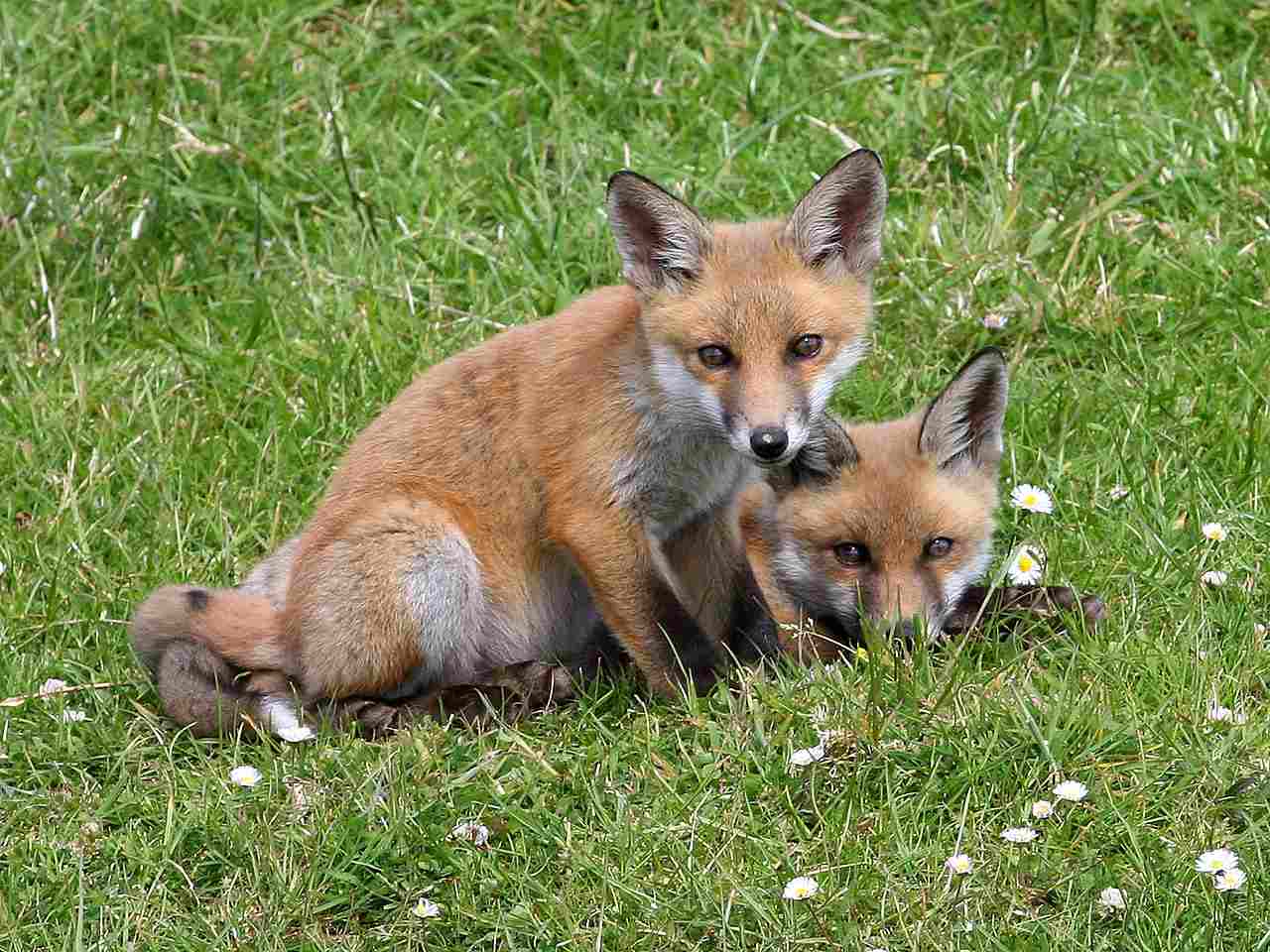
7. Do Hawks Eat Deer?
Yes, hawks do eat deer, but it is not a common occurrence. Hawks primarily feed on deer as carrion, meaning they scavenge on already dead deer rather than actively hunting and killing them. Hawks are not equipped to take down adult deer due to their size and strength.
However, they may prey on fawns, sick, or injured deer if given the opportunity. Hawks are unable to lift most deer, so they typically feed on them in situ, consuming the carcass where it is found. It’s important to note that hawks have a diverse diet and primarily target smaller mammals and birds.
8. Do Hawks Eat Rabbits?
Yes, hawks commonly eat rabbits as one of their most common prey, along with other rodents like field mice. Rabbits are a preferred food source for hawks due to their abundance and availability in many habitats. Hawks have excellent eyesight and can spot rabbits from high above, swooping down to catch them with their sharp talons.
Rabbits are agile and fast, but hawks are skilled hunters and can easily outmaneuver them in flight. They use their speed and agility to surprise their prey and catch them off guard. Once caught, hawks will typically consume the rabbit on the ground or in a nearby perch.
It’s important to note that not all hawks have the same diet preferences, and some species may have a greater inclination towards rabbits than others. However, rabbits are generally considered a significant part of a hawk’s diet, providing them with the necessary nutrients and energy for survival.
9. Do Hawks Eat Frogs?
Yes, hawks do eat frogs. Amphibians like frogs often make easy prey for hawks due to their abundance near bodies of water and their relatively slow movement on land. Hawks have sharp talons and excellent eyesight, allowing them to spot frogs from above and swoop down to catch them. Frogs are not particularly agile or fast, making them vulnerable to hawk attacks.
Hawks use their speed and agility to surprise their prey and catch them off guard. Once caught, hawks will typically consume the frog on the ground or in a nearby perch. It’s important to note that while frogs are part of a hawk’s diet, they may not be the primary food source for all hawk species. Hawks have diverse diets and may also consume other small animals like rodents, birds, and reptiles.
10. Do Coyotes Eat Foxes?
Yes, coyotes do eat foxes, but it is not a common occurrence. Coyotes are opportunistic predators and will consume foxes if alternative prey is scarce or if their territories overlap. However, foxes are not typically a preferred food source for coyotes. They have a diverse diet that includes small mammals, birds, reptiles, and even fruits and vegetables.
Coyotes are known for their adaptability and ability to survive in various habitats, which allows them to find a wide range of food sources. While coyotes may occasionally prey on foxes, it is not a regular part of their diet.
11. Do Hawks Eat Cats?
Hawks are known to prey on small cats, particularly those that are sick or injured. However, it is important to note that adult cats are not typically targeted by hawks. Hawks primarily hunt for smaller mammals, birds, and reptiles that are easier for them to capture and carry. While it is possible for a hawk to attack a small cat, it is not a common occurrence.
Hawks are skilled hunters and have sharp talons and beaks that enable them to catch and kill their prey. They are more likely to target animals that are closer to their size and within their natural hunting range. Adult cats are generally too large and agile for hawks to successfully capture and carry away.
If you have a small cat and live in an area with a high hawk population, it is advisable to keep your cat indoors or supervise them when they are outside to minimize the risk of an encounter with a hawk.
12. Who Eats the Fox?
Animals that prey on foxes include eagles, bears, cougars, coyotes, wolves, pythons, hawks, and owls. These predators have different hunting strategies and abilities that allow them to successfully capture and consume foxes.
Eagles, with their powerful talons and keen eyesight, are known to swoop down and snatch foxes from the ground. Bears and cougars, being larger and stronger, can overpower a fox and make it their meal. Coyotes and wolves, being fellow canines, are natural competitors of foxes and will not hesitate to hunt them down.
Pythons, although not native to all fox habitats, are formidable predators that can constrict and suffocate a fox before swallowing it whole. Hawks and owls, with their aerial hunting skills, can spot and seize foxes from above, taking advantage of their agility and surprise.
13. Do Eagles Prey on Small Animals?
Yes, eagles primarily prey on small animals. With their impressive wingspan and sharp talons, eagles are skilled hunters that can capture and consume a variety of small creatures.
Eagles are known to target small mammals such as rabbits, squirrels, and rodents. These agile birds of prey can swoop down from great heights and snatch their unsuspecting prey with precision. Their powerful talons allow them to grasp and carry off their catch to a safe location where they can feed undisturbed.
In addition to mammals, eagles also feed on small birds, fish, and reptiles. They have keen eyesight that enables them to spot their prey from a distance, whether it’s a fish swimming in a river or a bird perched on a branch. Once they have identified their target, eagles will use their impressive flying skills to swiftly close in for the kill.
It’s important to note that while eagles primarily prey on small animals, they are opportunistic hunters and will take advantage of larger prey if the opportunity arises. However, their hunting techniques and physical capabilities are best suited for capturing and consuming smaller creatures.
14. Can an Eagle Pick Up a 20 Pound Dog?
No, an eagle cannot pick up a 20 pound dog. Eagles can hardly lift more than 3.5 pounds due to their physical limitations. However, it’s important to note that eagles are powerful predators and can still pose a threat to a dog if the circumstances are right. If the area is deserted and the dog is vulnerable, an eagle may attack and prey on the dog in situ.
Eagles have sharp talons and beaks that can cause serious harm to smaller animals. While it is unlikely for an eagle to physically lift and carry off a 20 pound dog, they can still be a danger if the dog is in their territory. It’s important for pet owners to be aware of their surroundings and take precautions to keep their dogs safe from potential predators.
15. What is The Heaviest Animal an Eagle Can Carry?
An eagle’s carrying capacity typically ranges from 3.5 to 5.0 pounds. This means that they can lift and transport animals of this weight or lighter. While eagles are not known for carrying large animals, they are capable of capturing and flying away with prey such as a large rabbit, fox, or even a young ungulate.
However, it’s important to note that eagles are more likely to target smaller animals that are within their weight range. Their hunting strategies and physical limitations make it unlikely for them to carry animals heavier than their typical prey.
16. Do Eagles Eat Coyotes?
Eagles do not commonly eat coyotes, but they can prey on exposed young, carcasses, and even injured or sick individuals. While it is not their typical prey, eagles have been known to scavenge on coyote carcasses or take advantage of vulnerable young coyotes. However, it’s important to note that this behavior is not widespread or common among eagles.
Eagles primarily feed on fish, small mammals, birds, and carrion. Their hunting and feeding habits are adapted to their natural environment and prey availability. So while eagles may occasionally target coyotes, it is not a regular part of their diet.
17. Do Eagles Eat Wolves?
Eagles are not known to regularly eat wolves. However, in certain circumstances, eagles can prey on young or vulnerable wolves. While it is not a common occurrence, eagles have been observed scavenging on wolf carcasses or taking advantage of weakened or injured individuals. This behavior is more likely to happen when food sources are scarce or when the opportunity presents itself.
Eagles primarily feed on fish, small mammals, birds, and carrion. Their hunting and feeding habits are adapted to their natural environment and prey availability. Wolves, being larger and more formidable predators, are not typically targeted by eagles. Eagles are more likely to focus on smaller prey that is easier to catch and consume. So while eagles may occasionally interact with wolves, it is not a regular part of their diet.
18. What Do Foxes Eat?
Foxes have a diverse diet that includes birds, field mice, rabbits, squirrels, lizards, snakes, toads, frogs, fish, crabs, and shrimp. They are opportunistic predators and scavengers, adapting their diet to the available food sources in their habitat. Foxes are skilled hunters, using their keen senses and agility to catch small mammals and birds.
They are also known to raid bird nests and steal eggs. In addition to meat, foxes consume fruits, berries, and other plant matter. Their ability to adapt their diet allows them to survive in various environments, from forests to urban areas. While foxes are known for their carnivorous tendencies, they are not exclusively meat-eaters and have a wide range of food preferences.
19. Do Eagles Eat Snakes?
Yes, eagles do eat snakes, but their preference varies depending on the species. Eagles are known to prey on various kinds of snakes, including smaller ones like garter snakes and rat snakes. However, larger snakes like pythons are not typically part of their diet.
Eagles have sharp talons and powerful beaks that enable them to catch and kill snakes. They use their keen eyesight to spot snakes from high above and swoop down to snatch them up. Snakes provide a good source of protein for eagles, especially in areas where they are abundant.
While eagles are skilled hunters, they also consume a variety of other prey, such as fish, small mammals, and birds. Their diet depends on the availability of food in their habitat. Eagles are opportunistic predators and will adapt their diet to ensure their survival.
20. Do Eagles Eat Rabbits?
Eagles do eat rabbits quite often, as they are relatively easy prey, especially in open areas like grasslands. Rabbits are small mammals that make a convenient food source for eagles due to their size and abundance in certain habitats. Eagles, with their sharp talons and powerful beaks, are skilled hunters and can easily catch and kill rabbits.
They use their keen eyesight to spot rabbits from high above and swoop down to snatch them up. Rabbits provide a good source of protein for eagles, helping to sustain their energy levels and support their survival. However, it’s important to note that eagles are opportunistic predators and will adapt their diet based on the availability of food in their environment. So while rabbits are a common prey item for eagles, they also consume a variety of other animals depending on what is accessible to them.
21. Do Eagles Eat Bobcats?
Eagles do not typically prey on adult bobcats due to their size and agility. Bobcats are formidable predators themselves and can defend against potential threats. However, eagles may occasionally target young or injured bobcats as they are more vulnerable.
Additionally, if a bobcat carcass is available, eagles may scavenge on it for food. It’s important to note that these instances are relatively rare, as eagles have a diverse diet and primarily focus on smaller mammals, fish, and birds. So while it is possible for eagles to eat bobcats under certain circumstances, it is not a common occurrence.
22. What Animals Eat Red Foxes?
Red foxes have a variety of predators in their natural habitat. Bears, cougars, and wolves are among the larger predators that may prey on red foxes. These powerful animals have the strength and agility to take down a fox. Additionally, coyotes, wolverines, and badgers are known to hunt and feed on red foxes.
In some regions, non-native species like pythons and alligators have also been observed preying on red foxes. These encounters are less common but can occur in areas where these species have been introduced.
It is important to note that the predation of red foxes by these animals is a natural part of the ecosystem. These predators help regulate the population of foxes and maintain a balance in the ecosystem.

